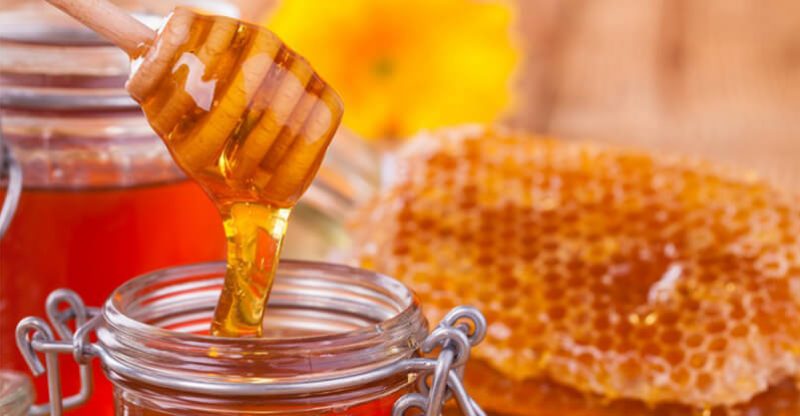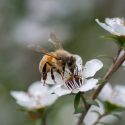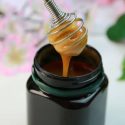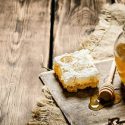Learn 5 Things How World Best Honey Can Improve Your Health
Since time immemorial, we humans have been collecting and enjoying the sweet goodness of honey. Ancient cave paintings discovered in Spain show humans collecting this food from beehives. Honey is a very nutritious and healthy food, and the Greeks rightly called it the “food of Gods.”
Modern science and technology have verified this claim. So we can call honey a “superfood” these days. Beyond its nutritive value, this amber liquid also has some potent healing and medical effects on the body.
Let us explore the various aspects about honey, and try to find out how to pick the world best honey.

1. Why Bees Produce Honey, And How Do They Do It?
Cows give us milk, hens give us eggs, and bees provide us with honey, these are facts every kid learns from an early age. But why exactly do bees produce this sweet, gooey liquid? And have you ever wondered how they do it? Let's explore.
A. Who Makes The Honey?
Honeybees are social insects, and each colony has a strict hierarchy and organization. The queen bee and male drones are in charge of reproduction. The workers are infertile females, who take care of all the tasks involving in the collection and storage of honey.
Flowering plants create nectar to attract the bees. It is a mutually beneficial natural arrangement, called “symbiosis.” The flowers need a way to spread their seed or pollen and reproduce. And bees need a source of food.
When honeybees collect nectar, the pollen gets stuck on their bodies, and it transferred to other flowers that the bees visit. Honeybees suck nectar from flowers using a straw-like organ, called a proboscis. This nectar is collected in the stomach and deposited in the hive. Honeybees convert nectar to honey using two processes:
- Enzymes in their stomach break down the sucrose in nectar into simpler glucose and fructose sugars
- The worker bees in the colony evaporate the water in this nectar by fanning their wings.
The result is a thick, extremely stable liquid food that is resistant to bacteria, mold, and fungi. It is easy to store, full of energy, and easy to digest as well.
A. Why The Bees Make Honey?
1. A Source of Food:
For us humans, honey may be a sweet side dish, something to complement a toast for breakfast. But for bees, honey is essential for survival. The carbs in honey give them the energy to fly around and do their work, while the pollen is a rich source of protein for their bodies.
2. Ideal for Survival in Winters:
Plants and flowers do not survive in harsh winters. Since honey is a highly durable product, it can last for years without getting spoiled. This makes it an ideal source of nutrition for a colony of bees in harsh winters. They seal the honey inside individual chambers in their hive using wax for use in winters.
2. The Different Types/Breeds Of Honeybees
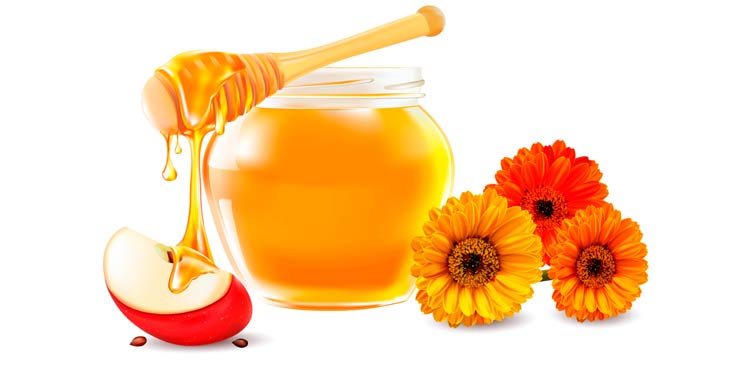
For us regular folk, all bees may look alike. But there are different breeds or types of honey bees all over the world, with different temperaments, varied resistance to diseases, and varying levels of productivity. The various important genetic stocks of honeybees are the following:
A. Different Honey Bee Subspecies
Italian Honeybee: They originated in the Italian regions of Sicily, and Southern Alps. They are reputed to have survived the great Ice Age. This subspecies is called Apis mellifera ligustica, and have beautiful pale colors. The Italian bees are favorite because they can survive in all kinds of climates across the world, but they are less productive in hot and humid tropics.
Russian Honeybee: These subspecies originated in the Primorsky Krai region in Russia. They are incredibly resistant to most parasitic mites that plague other bees. So they are often used by beekeepers to produce more resistant breeds of honeybees.
Carniolan HOneybee: These are European honeybee subspecies, found in central and Eastern Europe, in Austria, Hungary, Slovenia, Bulgaria, Romania, and Serbia. They are less aggressive and very easy to work with. So they are a prevalent species of bees. They also produce the best quality wax combs, ideal for the production of candles, soap, etc.
Caucasian Honeybee: As the name suggests, these bees are native to Eastern Europe, closer to the Caspian Sea region. They have very long tongues, which make them very efficient at foraging for nectar. They are also very calm and easy to deal with. But they are less productive and use a lot of gum in their hives, which makes extraction tougher.
Buckfast Honey Bee: When parasites wiped out bee colonies in the British Isles, a monk from Buckfast Abbey in England traveled all over the world to find the most pest-resistant bee species. He then created a new stock, mainly based on Italian bees, and this subspecies came to be known as Buckfast Bees. They are very docile and excellent producers of quality honey.
Africanized Honeybee: In the 1950s, they tried to increase honey production by breeding wild African Honey Bees with more docile European bees. But these new breeds escaped quarantine and spread throughout South and Central America. They are more aggressive and has caused numerous human and animal deaths.
These are the six dominant honey bee species popularly found across the world. Now let us look at some of the significant therapeutic benefits of honey. Let's start with a pervasive issue: acne.
3. Using Honey To Cure Acne Scars
All of us have had to deal with acne at some point in our lives and not just during puberty either. Acne breakouts occur when dirt, dead skin cells, and oils block the pores in our skin. These blocked pores become breeding grounds for bacteria, leading to infections and inflammation.
Acne breakouts often result in scars which then require expensive medical and surgical procedures. But honey is a cheaper, organic, and highly efficient option to fight acne. Since honey is a potent anti-bacterial and anti-inflammatory agent, you can get exception results using this substance.
A. Five Ways How Honey Can Help You Deal With Acne:
Honey is rich in natural antibiotic substances. They fight and kill the bacteria in your pores that cause acne.
Honey also contains an active ingredient called hydrogen peroxide. This is an antiseptic compound, with the ability to heal wounds. It will help heal those acne scars effectively.
Honey also has potent anti-inflammatory effects on human tissue. This will reduce the swelling and redness often associated with acne breakouts.
Eating honey is highly beneficial to your blood circulation and metabolic system. With these two improvements, your body can remove toxins from your system more efficiently. This reduces the chance of acne breakouts.
Honey is also an excellent natural moisturizer for your skin. Applying it to the affected area accelerates the healing and recovery process in your skin cells.
B. Using Honey To Treat Acne: 7 Different Methods
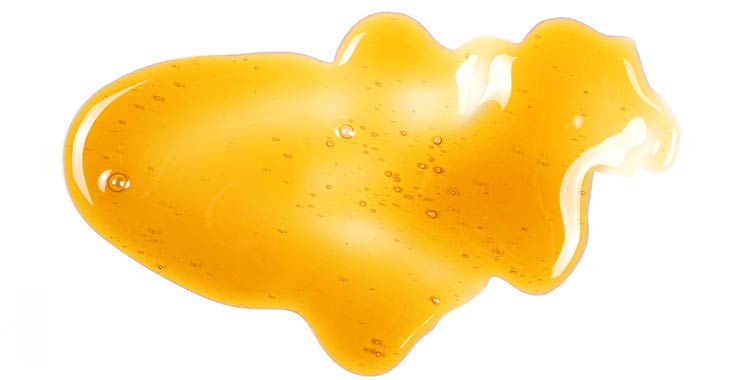
So, now you know that honey is extremely effective against acne breakouts. But how do you use it to have these beneficial effects on your body? Eating and applying it to your skin may be the most straightforward way. But honey can be used in seven different ways, with or without other ingredients, to better fight acne:
1. Raw Honey:
The simplest method is to apply a thin layer of organic honey to the affected skin area. Remember to wash and dry your face before doing this. Leave the honey there for ten minutes, and then do a gentle massage with your fingers. You can even leave the honey overnight, for best results. Rinse off with cool water and then pat dry your face.
2. With Lemon Juice:
Honey mixed with fresh lemon juice has potent bleaching effects on the skin. Mix both ingredients in equal quantities, and apply on clean and dry face. Leave for 15 minutes, then spray some warm water and do a soft tissue massage. Rinse the stuff off with cool water and then pat dry. Repeat the process for best results.
3. With Turmeric:
Since turmeric is a potent antiseptic, adding it to honey results in stronger healing action. Make a mixture of one tablespoon honey and one teaspoon turmeric powder. Apply it to your skin and leave for 15 minutes.
Again, massage using your wet fingers, for three minutes. Rinse off with cool water and pat dry. Repeat this process daily for maximum exfoliation and healing effect.
4. With Cinnamon:
Make a mixture of equal parts honey and equal parts organic cinnamon powder. Apply all over your face, and leave it for 15 minutes. Then rinse the skin with cool water and pat dry. Repeat on a daily basis for best results.
5. With Cinnamon and Nutmeg:
Like honey, nutmeg is also very effective in stopping inflammation, and swelling. Combine one tablespoon of honey with a teaspoon of cinnamon and one teaspoon of nutmeg powder.
Apply this mixture on your skin, and rinse off with warm water after 15 minutes. Pat dry your skin. Repeat daily for the best results.
6. WIth Brown Sugar:
This ingredient is an excellent exfoliant, and can improve honey’s ability to remove toxins from your skin. Combine one tablespoon of honey with one teaspoon of brown sugar.
Apply the paste on your skin, and allow it to dry. Massage the area using wet fingers, and then rinse with cool water. You can repeat this process daily for long-term benefits.
7. With Olive Oil:
Olive is also an excellent moisturizer and exfoliant that can remove toxins from your skin. Combine two tablespoons of honey with an equal amount of olive oil. Apply the mixture to acne spots and gently massage for five minutes.
Place a warm compress on the area by soaking some cloth in hot water and then wringing it off excess liquid. Leave this in place until the mixture dries out. Remove the mix using the cloth, then rinse with cool water. Repeat this process twice a week.
4. Other Major Health Benefits From Honey
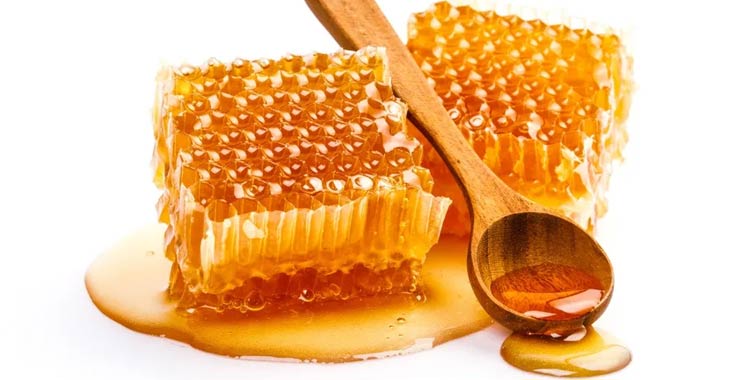
Acne is just one among a host of health conditions that honey can treat. Honey is an active ingredient in many herbal remedies from across the world. Here are 20 health benefits of natural honey:
A. Fighting Ulcers
Honey is rich in glucose oxidase, an enzyme that produces hydrogen peroxide. Hydrogen peroxide is an effective antiseptic that kills bacteria. And natural raw honey also contains pollen substances which have anti-bacterial properties.
And since many bacteria cause ulcers, honey can prevent and cure them. In countries like Russia, Egypt, India, and Saudi Arabia, traditional remedies use honey to treat ulcers.
To obtain best results, locally produced honey is the ideal choice. In the initial days, you should use two tablespoons of honey daily. Once you start noticing relief from ulcer symptoms, reduce the dosage to one tablespoon.
B. A Cure For Cough and Throat Infections
Just two teaspoonful’s of honey can keep away a nasty cough for the entire night. Studies comparing honey to cough suppressants like dextromethorphan show that honey is quite effective in curing cough symptoms.
And since it is cheaper and more easily available, honey has an edge over OTC cough remedies. Honey can be consumed raw, or combined with other ingredients like lemon water, warm milk, ginger, or apple cider vinegar.
C. Controlling Blood Sugar
Despite being a sweetener, honey has a potent effect on balancing blood sugar levels. It is capable of doing this due to its ability to balance glucose and fructose. The fructose in honey, when consumed, converts the glucose to glycogen in the liver.
D. Healing Wounds and Burns
Healing effects of honey on cuts and burns is known across the world. Estimates indicate that honey is used to treat 5.5 % of these injuries globally. The wound healing capacity of honey can fluctuate depending upon the type and origins.
For instance, Manuka honey, a medicinal honey unique to New Zealand, is more powerful than other types, due to the presence of a healing compound called methylglyoxal.
E. Weight Management
Unlike regular sugar, honey contains minerals and vitamins along with the carbs, making it a perfect choice for healthy folk. Refined sugar, on the other hand, contains only empty calories.
Honey can help reduce obesity or maintain a particular body weight. Honey in warm water with lemon juice is a refreshing drink, with beneficial effects on circulation and cholesterol levels.
F. Managing Allergies
Pollen causes most allergies, usually between February and September. Locally sourced honey is rich in these pollen particles. Consuming it affects the body which is similar to allergy shots. It makes you less sensitive to pollen-based allergies.
G. Source of Energy
Carbohydrates are crucial for energy levels and maintaining muscle glycogen. Honey is very rich in carbs. Taken before workout sessions, it ensures a continuous supply of healthy carbs to the body. It helps nourish your muscle and reduces overall fatigue.
H. Antioxidant
Polyphenols are the most powerful antioxidants, found in many healthy veggies, olive oil, and green tea. Honey is also rich in these highly beneficial compounds. Some types of honey, like Manuka honey, has more antioxidants than others.
I. Cancer Prevention
Honey is rich in healing and antioxidant compounds like phenolic acids, proteins, amino acids, and flavonoids. They help in reducing the impact of free radicals and combats oxidative stress in the body. This helps prevent cancer.
J. Treating Cardiac Conditions
LDL Cholesterol is responsible for many heart conditions like strokes and heart attack. Honey contains natural compounds that fight against bad LDL cholesterol.
So natural honey can help prevent strokes and heart attacks in the long run.
K. Reducing Digestive Issues
Honey and lemon is a wonderful combination for treating many kinds of digestive problems like abdominal pain, ulcers, and irritable bowels. On the whole, honey has a very healing effect on the digestive tract.
L. For Improved RBC & WBC Count
Daily consumption of honey can boost immunity and blood cell counts. It balances RBC and WBC levels in the blood, normalizing the level of WBC, and increasing RBC and hemoglobin levels.
M. Healthy and Glowing Skin
As we have already noted before, honey has a host of therapeutic and cosmetic benefits for your skin. Honey is safe on dry, sensitive and oily skin types with no side effects. It is an excellent moisturizer and exfoliant. Honey is a critical ingredient in various fruit and milk-based face masks.
N. For Scalp Health
Honey can help cure skin infections that commonly affect the scalp. These include seborrheic dermatitis and dandruff. Honey can heal the infection in a matter of weeks, and also help reduce the itching.
O. Promoting Sleep

Honey is used in traditional medicine to promote healthy sleep and cure insomnia. It provides glycogen to the liver, which helps in detoxification. Honey also regulates sleep hormones, improving the quality and duration of your sleep.
P. Strengthening Immune System
Honey has a positive effect on WBC and RBC counts in your blood. Combined with its antibacterial and anti-inflammatory powers, honey provides a complete boost to your immune system. You can claim all these benefits by drinking water mixed with honey and lemon juice daily on an empty stomach.
Q. Balancing The Five Major Organs
The main vital organs of the body are the heart, liver, kidneys, lungs, and stomach. Honey helps maintain a proper balance between all these systems.in the body. Its ability to penetrate deep into the tissues is considered the reason for this. As a result, honey is an essential ingredient in traditional Indian medicine system called Ayurveda.
R. A Potent Prebiotic
A prebiotic is a substance that helps digestion by affecting the microorganisms in your gut. The intestines contain a lot of bacteria, some good and some bad. Using just probiotic foods raises the level of both kinds of bacteria. Honey helps regulate these levels.
S. A Healthier Alternative To Sugar
There is too much sugar in our diet these days, leading to spiking diabetes levels. Honey is a delicious and healthy alternative to baking and other forms of cooking. It enhances the flavor and texture of dishes and is capable of creating a rich and tasty browning effect.
T. Stress Reliever
Stress can accelerate the effects of aging. Compounds in honey help reduce these effects, especially on your skin and face. These nutrients also have a very calming effect on your body and mind.
5. Decrystallizing Honey
Raw honey has a natural tendency to solidify over time, leading to the creation of solid crystals. Though it can be fun to eat, crystallized honey is hard to incorporate into dishes or use as a bread spread. But you can decrystallize honey and bring it back to its natural state.
Follow the following steps:
A. Use A Glass Jar:
Plastic jars are unsuitable for the decrystallization process. If your honey is in a plastic jar, move it into a glass jar. Use a knife or spoon to do this.
B. Heat it:
Use the parboiling technique to heat the honey inside the glass jar. Heat some water in a deep pan, and place the jar in the pan. Leave the heat at low-medium, and simmer the water. Ensure that the jar is not submerged, and that water does not enter the honey. But don't close the jar altogether, as it can explode. Try to leave the water level outside the jar is at least halfway up the side.
C. Simmer For Some Time:
Wait for 20-30 minutes, while the water simmers. You can even use a timer if you want. Remember to stir the honey inside the jar occasionally. Use some tongs to take the jar out of the water to inspect the progress if you need to.
D. Remove From Water:
Once you see that all the crystals have disappeared, you can turn off the heat and take the honey out of the dish. Put the jar in a bowl of warm water to prevent the honey from cooling quickly. Seal the jar once it is cool, and store it at temperatures between 64-75 degrees. Don't store honey in a refrigerator.
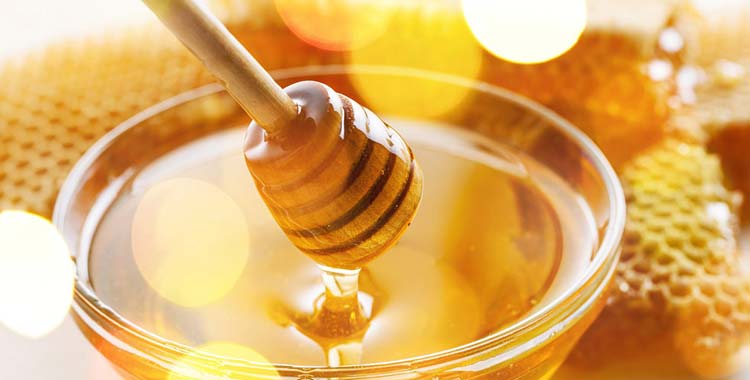
Honey is an incredibly unique food. No other raw material has this much health benefits combined with a delicious taste. You should try to include more raw, organic honey into your diet to utilize all its benefits.
For best results, either go for locally sourced organic honey or look for special therapeutic variants like a natural, certified Manuka honey. There is no excuse for not using this ingredient, not when it is as delicious as this!

